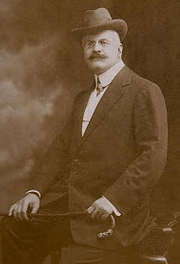
Photo from gubanyi.hu website.
On a visit to the State Records of South Australia last week, I came across a few fascinating documents which alerted me to the visit of a Hungarian Engineer to Australia c 1931 to research the ‘latest irrigation achievements’ done in different foreign countries. It seems he wrote an article for publication in the Hungarian Journal Vizughyi Kozlemeney, published by the Hungarian Department of Agriculture.
In 1933, he forwarded a copy, with ‘sincerest gratitude and thanks’ to the River Murray Commission in Canberra, mentioning that his contribution was on pp. 439-535. The editor of the journal had expressed his sincerest thanks to the River Murray Commission for ‘supplying us with a very rich and valuable collection of data concerning the magnificent engineering works executed in the Murray River Valley.’
The link to the paper is here, but a subscription is required to read it, (which I do not have.) The 1932 edition of VIZUGHI KOZLEMENEY
Gubanyi had been visiting Australia, (and had lived in NSW earlier in the century) and at the end of this period of research had requested photographs of various stages of the works for inclusion with his article. The journal’s focus was on Hydraulic Engineering and was partly to allow a means of exchange of engineering/technical information between countries.
It is fascinating to know that not only did Australia bring in overseas experts to assist in the planning and surveying of the locks, (Captain Johnston from America, for example), but that others around the world were actively interested in the program as it took shape here in the Murray Darling Basin.
Charles Gubanyi was an interesting fellow, described as an ‘engineer and world traveller’. Born in 1867, he studied at the Budapest Polytechnic and earned his Engineering Degree in 1890. After a few years in railroad construction, he was involved in the Manchurian railroad construction, especially of its tunnels. Next he accepted a job at the construction of the port of Vladivostok. In 1906, he moved to Australia and lived on an agricultural property at Uranquinty, a small town about 15 km from Wagga Wagga and in 1913, he sold up and returned to Hungary. A Trove article describes the fond farewells given by local people on his departure. On returning to Hungary, he started an experimental farm in Pilis and published several travel-related accounts and economic policy papers. (Obviously he returned to Australia around 1931 for this article on locking the river.)(Source: http://library.obu.edu/HungarianWorldEncyclopedia.pdf)
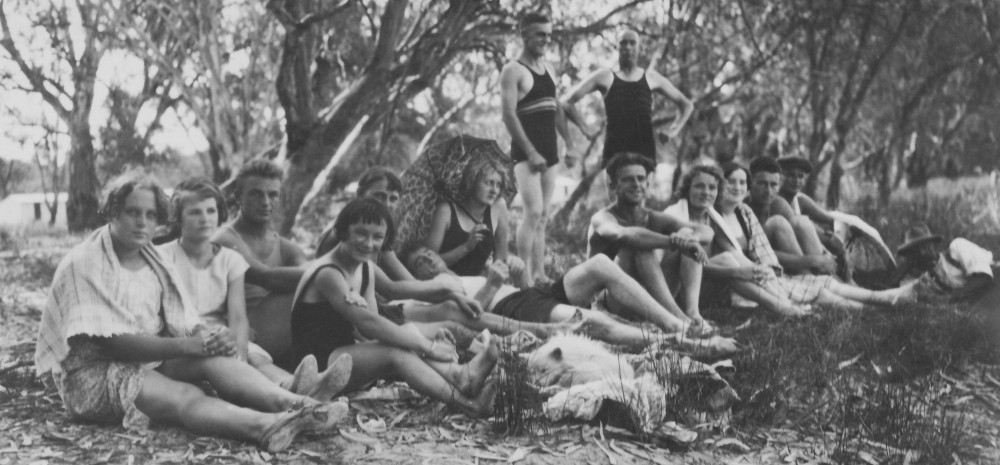

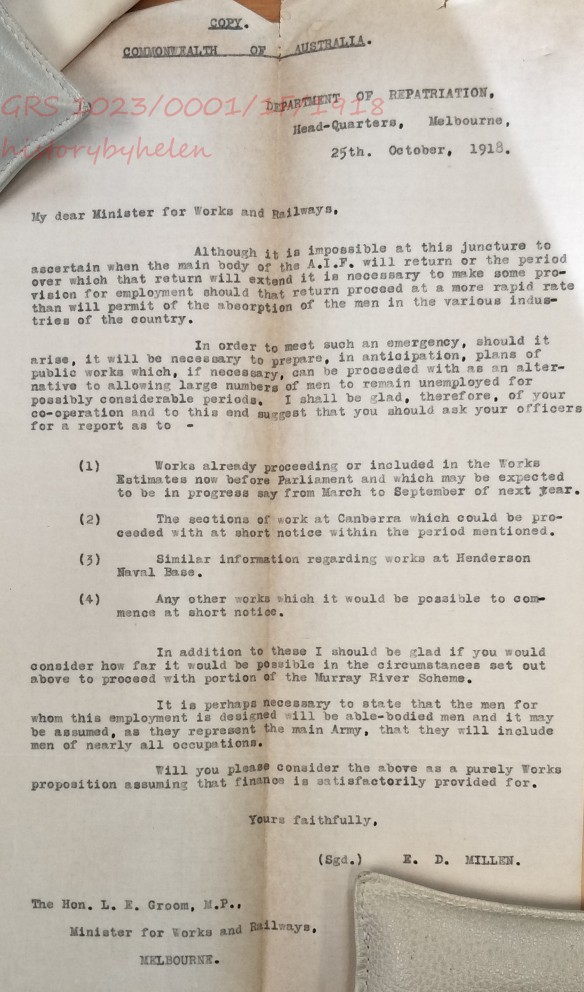
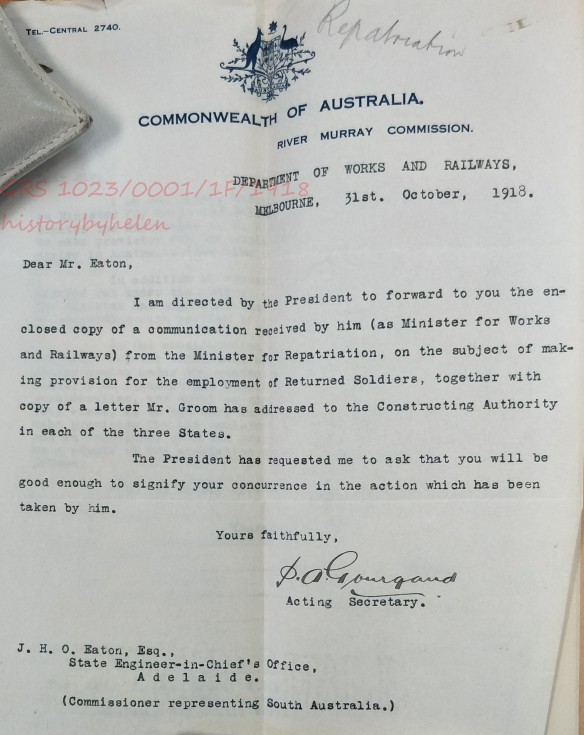
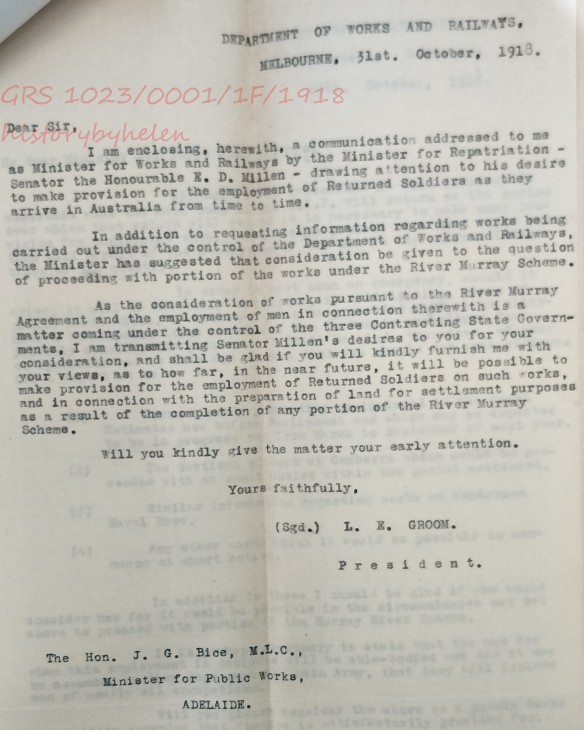
 eral Billy Hughes said on seeing the river for the first time that day, they were ‘at the beginning of a new chapter of Australian History, a chapter that was to introduce quite a new era.’
eral Billy Hughes said on seeing the river for the first time that day, they were ‘at the beginning of a new chapter of Australian History, a chapter that was to introduce quite a new era.’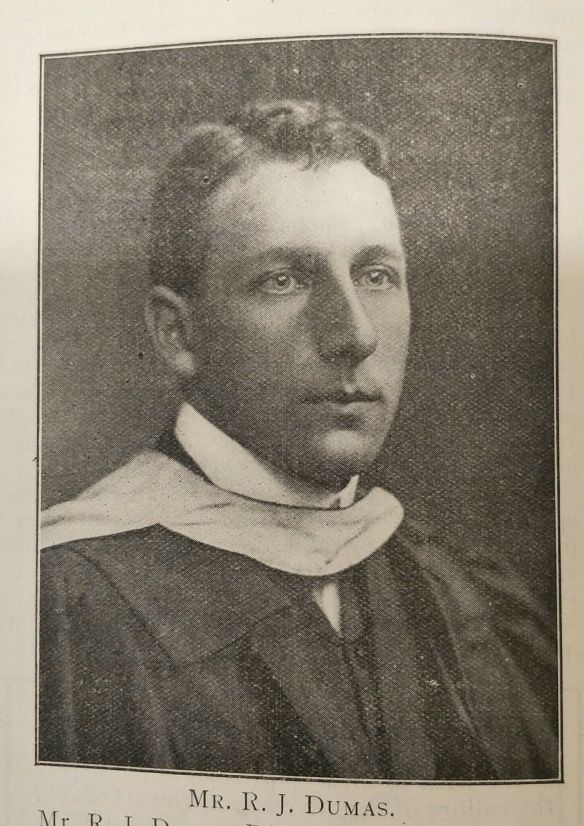 My paper is on Russell John Dumas and his contribution to the Murray River Waters Scheme. Russell John Dumas, 1887 – 1975, was a ‘home-grown’ SA engineer of exceptional talent and promise. In a 1924 presentation on Murray River lock construction, he claimed that Lock 3 near Overland Corner in South Australia, where he was Resident Engineer, was the first of the larger locks, (with lock chamber, navigable pass-way and sluiceway), to be constructed by an Australian engineer. American engineer, Robert Cutting had been Constructing Engineer at Blanchetown’s Lock 1 at the start of the ambitious River Murray Waters Scheme.
My paper is on Russell John Dumas and his contribution to the Murray River Waters Scheme. Russell John Dumas, 1887 – 1975, was a ‘home-grown’ SA engineer of exceptional talent and promise. In a 1924 presentation on Murray River lock construction, he claimed that Lock 3 near Overland Corner in South Australia, where he was Resident Engineer, was the first of the larger locks, (with lock chamber, navigable pass-way and sluiceway), to be constructed by an Australian engineer. American engineer, Robert Cutting had been Constructing Engineer at Blanchetown’s Lock 1 at the start of the ambitious River Murray Waters Scheme.


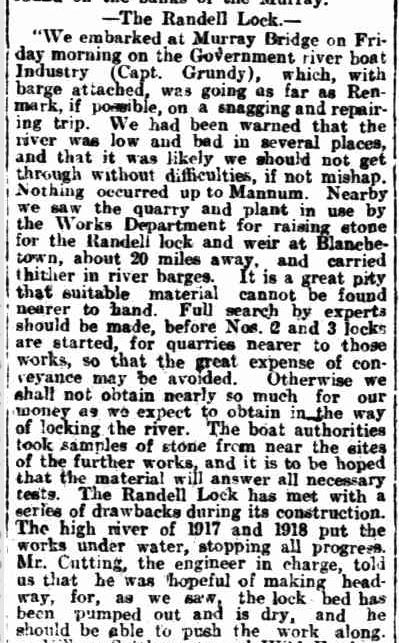

 The ideal Christmas gift: Harnessing the River Murray: stories of the people who built Locks 1 to 9, 1915-1935’ by Helen Stagg. This book provides a rare insight into life at these remote temporary river towns up to 100 years ago.
The ideal Christmas gift: Harnessing the River Murray: stories of the people who built Locks 1 to 9, 1915-1935’ by Helen Stagg. This book provides a rare insight into life at these remote temporary river towns up to 100 years ago.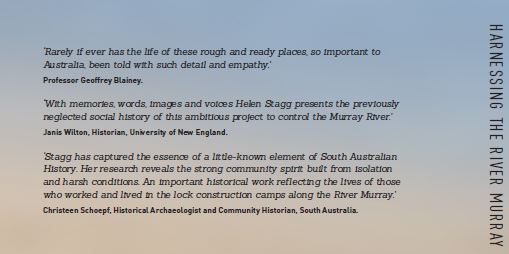



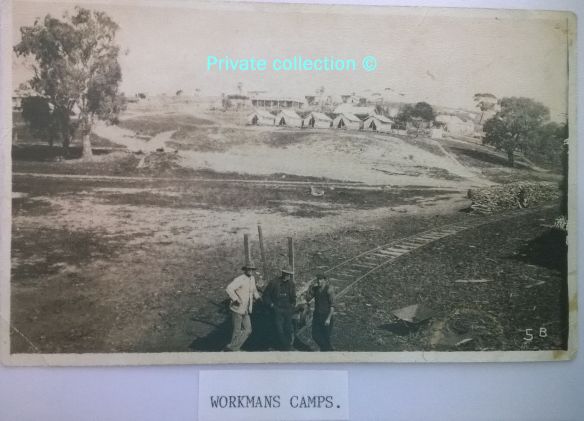
You must be logged in to post a comment.